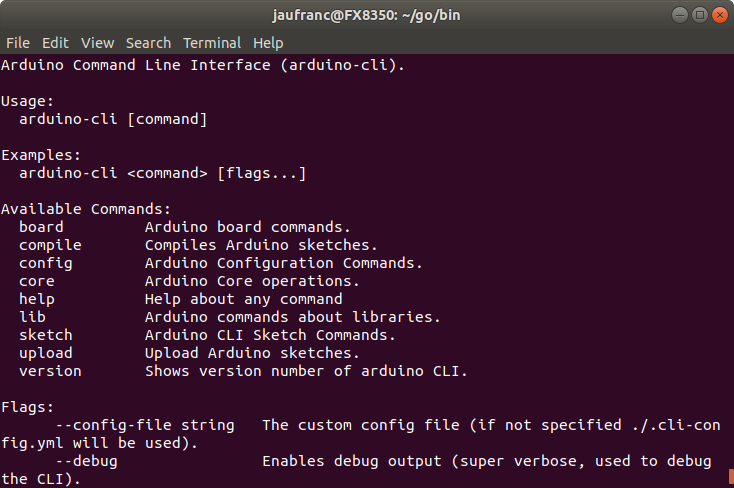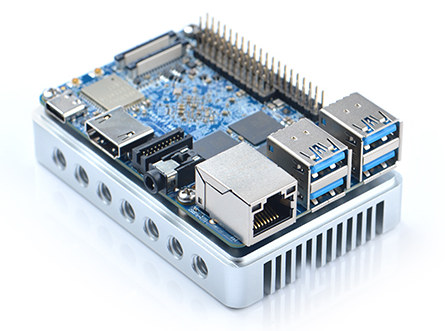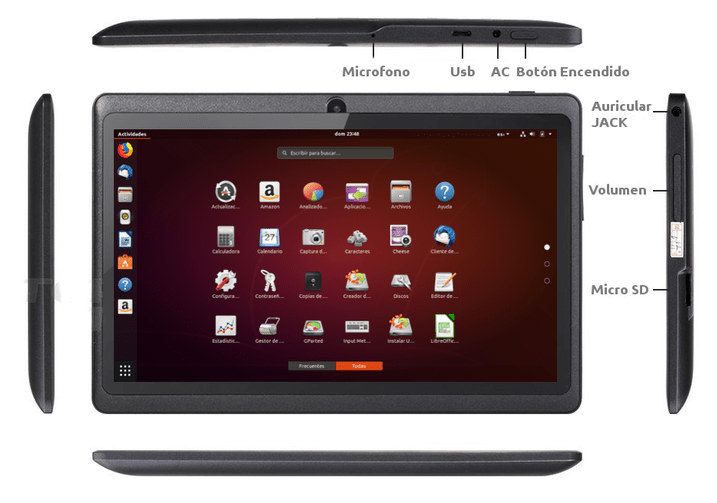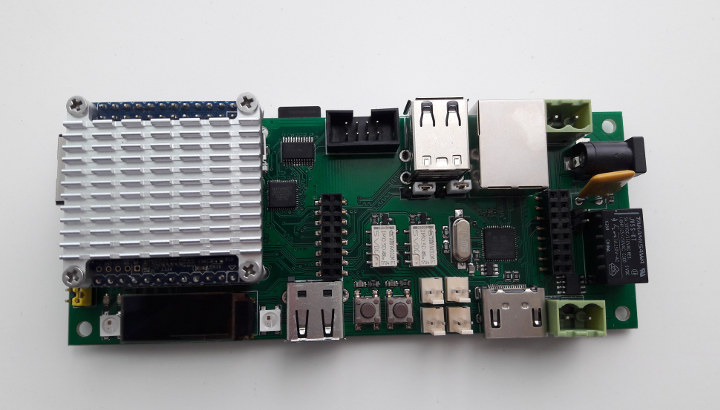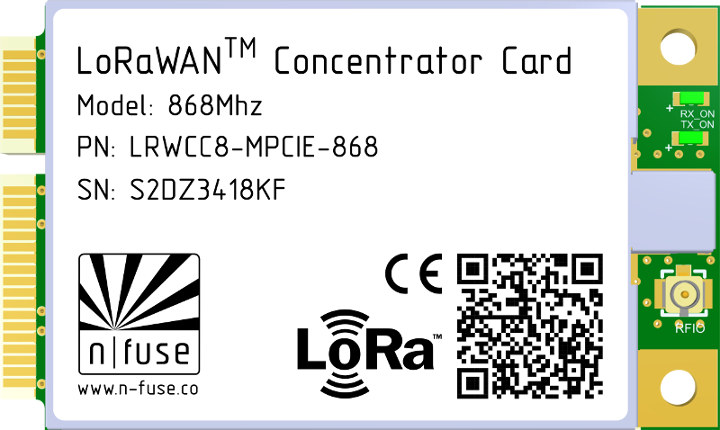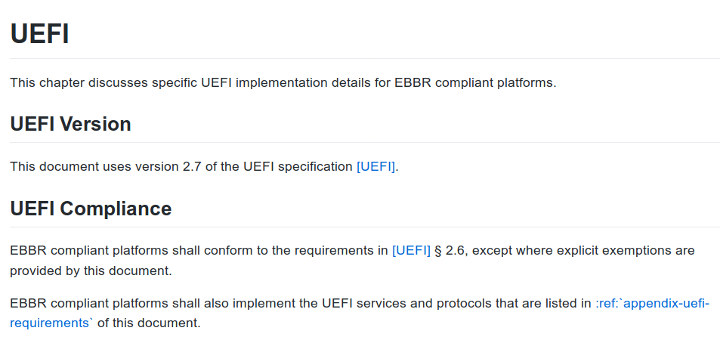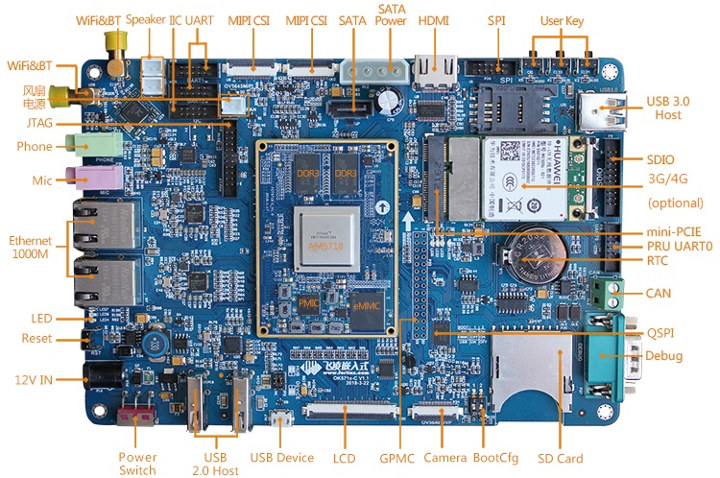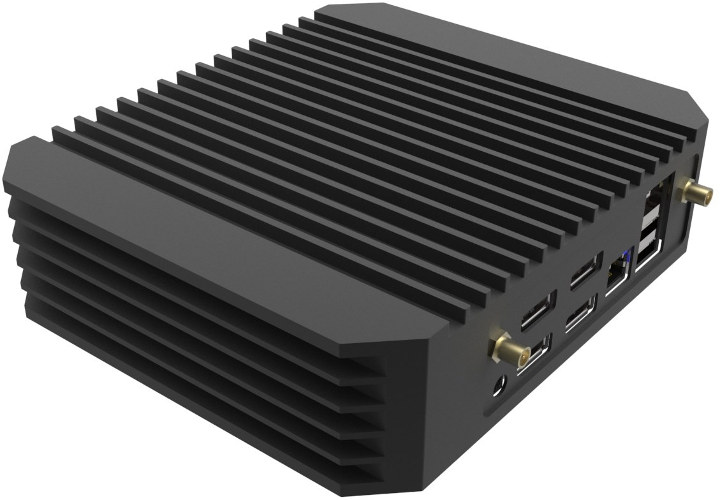So far, AFAIK the only official ways to program Arduino boards were through the Arduino IDE program, or the cloud-based Arduino Create which works in your web browser and does not require any installation on your computer. While graphical interfaces are nice and user-friendly, many of us are more productive while working using the command line, especially if commands can be scripted. So Arduino decided to work on a command line interface (CLI) for professional users, and have just announced a preview release. arduino-cli works in Windows, Linux, and Mac OS, and allows you install libraries, boards, and cores (e.g. esp32 Arduino core), compile the code, and upload the binary to the target board. If you want to get started quickly, you can download the binary “alpha” releases in the announcement board, but instead I opted to build the client myself as explained on Github. Everything below is done in […]
NanoPi M4 Raspberry Pi Inspired RK3399 Board Launched for $65 and Up
As expected, FriendlyELEC has now launched NanoPi M4 board, a lower cost version of NanoPC-T4 Rockchip RK3399 SBC, and mostly following Raspberry Pi form factor. How much you may ask? That would be $65 plus shipping for the 2GBRAM version, and $95 for the 4GB RAM version, which means it sells in the same ballpark as RockPro64 board. NanoPi M4 board specifications: SoC – Rockchip RK3399 big.LITTLE hexa-core processor with 2x Arm Cortex-A72 @ up to 2.0GHz, 4x Cortex-A53 @ up to 1.5GHz, a Mali-T864 GPU with support OpenGL ES1.1/2.0/3.0/3.1, OpenVG1.1, OpenCL, DX11, and AFBC, and a VPU with 4K VP9 and 4K 10-bit H265/H264 6decoding System Memory – Dual-channel 4GB LPDDR3-1866, or dual-channel 2GB DDR3-1866 Storage – eMMC module socket, micro SD card slot Video Output HDMI 2.0a up to 4K @ 60 Hz with HDCP 1.4/2.2 support 4-Lane MIPI-DSI connector Audio – 3.5mm headphone jack, HDMI digital audio […]
TableX Arm Linux Tablet Runs Armbian Ubuntu, To Launch for 89 Euros
If you want an Arm Linux laptop, you have already some choices with products such as Pine64 Pinebook, or Olimex TERES-I open source hardware laptop, but if instead you’d rather do without keyboard, and get an Arm Linux tablet, choices are much more limited, if any at all. Back in 2012, Allwinner A10 based PengPod 700 & 1000 tablets were available for the company has since folded, and this year, RasPad case launched to allow you to build your own thick tablet with a Raspberry Pi 3 (B+). However, if you want to normal looking tablet, your best option right now is to get an Android tablet and mess around to install Linux on it. That’s not for everyone, and the good news is that what looks like a proper – albeit low-end – Arm Linux tablet is coming to market soon with TableX. TableX preliminary hardware specifications: SoC – […]
MuxPi Board Relies on NanoPi NEO to Enable Remote Testing of Development Boards
Product development often occurs in different location over the world, there may be one team in Asia, and another in Europe and the US. At the beginning, the number of working samples for a board may be limited, so the project manager may have to decide who gets the boards since those may not be available to all teams. So it would be great if somehow there was a way to do remote testing of boards, so maybe the team in Asia could setup the testbed, used it during there time, and once they are back home, the US team can take over remotely to carry on their own development work on the hardware. That’s exactly what MuxPi board is all about. The solution provide remote access via the Ethernet port of a NanoPi NEO board, and connects to the DUT (Device under Test) via HDMI, Ethernet, USB and other […]
n-fuse LoRaWAN Concentrator mini PCIe Card Comes with either SX1301 or SX1308 Chip
Most gateways are based on Semtech SX1301 chip, but the company unveiled a SX1308 chip for picocell gateways back in 2016 that’s supposed to be cheaper and used indoors. Designs have been slow to come to market, but a few have been launched recently including n-fuse LRWCCx-MPCIE LoRaWAN concentrator mini PCIe card that comes with either SX1301 or SX1308 chip, and is compatible with Semtech’s Pico Gateway design. n-fuse LRWCCx-MPCIE key features & specifications: LoRa Connectivity SX1301/ SX1308 digital base band processor with dual SX1257 Tx/Rx front-ends Output power level up to 23 dBm u.FL connector (50 Ω impedance) for external antenna 868 MHz model Frequency Range – 863 to 870 MHz Sensitivity – Up to -124 dBm at SF7 (BW 125 KHz), up to -138 dBm at SF12 (BW 125 KHz) 915 MHz model Frequency Range – 915 to 928 MHz Sensitivity – Up to -125 dBm at SF7 […]
Embedded Base Boot Requirements (EBBR) Project Aims to Standardize Booting on Embedded Systems
Desktop and server systems relies on standardized interfaces between the bootloader and the OS like UEFI and ACPI, but for embedded systems the way the bootloader, often U-boot, handles the boot flow may vary greatly between targets. Arm and its partners already worked on this in the server space with the Server Base Architecture Specification (SBSA) , and more specifically the Server Base Boot Requirements (SBBR) within the specification that requires the use of both UEFI and ACPI on servers. Arm has now done something similar with the Embedded Base Boot Requirements (EBBR) project that targets specifically embedded systems, is based on a subset of UEFI, and works with either ACPI or device tree. EBBR specification once implemented in bootloaders like U-boot or Tianocore/EDK2 should allow a single version of an OS image to boot on multiple platforms without the per-platform customization required today.. In practical terms it means the […]
Forlinx OK5718-C Development Board is Powered by TI AM5718 Cortex-A15/M4 processor
Forlinx Embedded Technology (Forlinx) has just launched a new development board for indsutrial applications with audio and video processing requirements. OK5718-C development board features Texas Instruments AM5718 Sitara SoC with a single Arm Cortex-A15 core, two real-time Cortex-M4 cores, a dual PRU, and a TI C66x DSP core. OK5718-C development board consists of a carrier board and FET5718-C SoM with the following specifications: FET5718-C System-on-Module SoC – TI AM5718 Sitara Arm Cortex-A15 processor @ up to 1.5GHz, C66x DSP @ 750MHz, dual-core Arm Cortex-M4 @ 213MHz, dual core PRU @ 200MHz, PowerVR SGX544 3D GPU, Vivante GC320 2D GPU, IVA-HD video accelerator subsystem (H.264, MPEG4, MPEG2, VC1) System Memory – 1GB DDR3L Storage – 8GB eMMC flash Board-to-board connectors for interface with baseboard – 320–pin exposing USB 3.0, PCIe 3.0, HDMI 1.4a, LCD RGB, 10x UART, 1x QSPI, 2x CAN, 2x Gigabit Ethernet, etc… PMU – TI TPS659162RGZR Supply Voltage – […]
Tranquil PC’s AMD Ryzen Embedded Mini PC Supports Up to 4 Displays
AMD Ryzen Embedded V1000 processor family was introduced last February, but if you’d wanted to buy a Ryzen Embedded mini PC today, you’ struggle to do so at least for a retail model. One option is to get an UDOO Bolt V3/V8 development board together its metal case and assemble the mini PC yourself. The solution was launched on Kickstarter however, and will only start shipping in December 2018 if everything goes according to plans. If you’d rather get a Ryzen Embedded mini PC a little earlier, Tranquil PC’s Mini Multi display PC may be an option with a choice of three Ryzen embedded V1000 processors, a fanless design, and support for up to 4 independent displays. Transquil PC’s mini multi-display PC Basic/Advanced/Advanced+ specifications: SoC Basic – AMD Ryzen Embedded V1202B, 2C/4T @ 2.3 / 3.2GHz, TDP: 12W-25W Advanced – AMD Ryzen Embedded V1605B, 4C/8T @ 2.3 / 3.6GHz, TDP: […]


